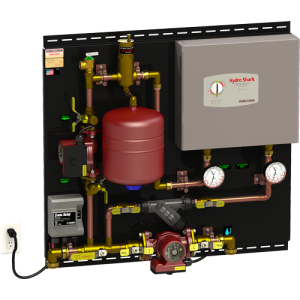Heat sources :
In an oil subsidiary power plant using a steam cycle for power age, the fundamental hotness source will be the consumption of coal, oil, or combustible gas. From time to time bring about fuel, for instance, the carbon monoxide-rich off-gasses of a coke battery can be seared to warm a warmer; biofuels like bagasse, where fiscally open, can moreover be used. In a nuclear power plant, boilers called steam generators are warmed by the hotness made by nuclear splitting.

Where a colossal volume of hot gas is available from some collaboration, a hotness recovery steam generator or recovery evaporator can use the hotness to convey steam, with for all intents and purposes no extra fuel eaten up; such a course of action is ordinary in a joined cycle power plant where a gas turbine and a Boiler Servicing Warmington are used. In all cases the consuming waste gasses are liberated from the functioning liquid of the steam cycle, making these frameworks events of outside turn over motors.
Materials :
The strain vessel of a warmer is regularly made of steel (or blend steel), or for the most part of designed iron. Solidified steel, especially of the austenitic sorts, isn’t used in wetted segments of boilers in light of utilization and stress disintegration breaking. Equipment Directive” for the development of steam for sanitisers and disinfectants.
In live steam models, copper or metal is consistently used considering the way that it is even more easily fabricated in more unobtrusive size boilers. Overall, copper was routinely used for fireboxes (particularly for steam trains), because of its better formability and higher warm conductivity; nevertheless, in later events, the excessive expense of copper every now and again makes this an uneconomic choice and more affordable substitutes (like steel) are used taking everything into account.
For a huge piece of the Victorian “season of steam”, the principal material used for heater making was the most essential grade of iron, with getting together by riveting. This iron was oftentimes obtained from master ironworks, for instance, those in the Cleator Moor (UK) district, noted for the extraordinary of their moving plate, which was especially fitting for use in essential applications like high-pressure boilers. In the 20th century, plan practice moved towards the use of steel, with welded advancement, which is more grounded and more affordable and can be made even more quickly and with less work. Made iron boilers disintegrate verifiably more comfortably than their present steel accomplices, and are less defenceless to limited pitting and stress-disintegration. That makes the life expectancy of more prepared moulded iron boilers obviously better than that of welded steel boilers.
Project iron may be used for the warming vessel of local water radiators. Yet such warmers are ordinarily named “boilers” in specific countries, their inspiration is, generally speaking, to convey warmed water, not steam, consequently, they run at low strain and endeavour to avoid foaming. The shortcoming of solid metal makes it impossible for high-pressure steam boilers.

